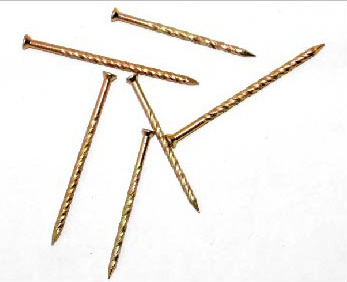In the process of home decoration, the installation of flooring is a crucial step, and floor nails are essential for ensuring that the flooring is secure and aesthetically pleasing. Despite their small and inconspicuous nature, floor nails play a significant role in fixing the flooring, maintaining structural stability, and extending the lifespan of the floor. This article will detail the types, functions, and selection methods of floor nails, helping you better understand this key aspect of home decoration.
1. Types of Floor Nails
Floor nails can be categorized based on their use and material. Here are some common types of floor nails:
- Standard Steel Nails: The most common type of floor nail, inexpensive, and suitable for general wooden floor installations.
- Threaded Nails: These nails have threads along the shank, providing better grip and preventing loosening, suitable for situations requiring higher fixing strength.
- Hidden Nails: Specifically designed for hidden installations of solid wood and composite flooring, preserving the floor’s surface appearance.
- Stainless Steel Nails: Resistant to rust and corrosion, ideal for installations in moist environments such as bathrooms and kitchens.
2. Functions of Floor Nails
Floor nails serve several crucial functions in floor installation:
- Fixing the Floor: Floor nails secure the flooring firmly to the subfloor, preventing movement or lifting and ensuring the floor's flatness and stability.
- Enhancing Structural Stability: By tightly connecting the floor to the subfloor, floor nails enhance the overall structural stability of the flooring system, extending its lifespan.
- Preventing Floor Deformation: Proper use of floor nails can effectively prevent deformation of the flooring caused by thermal expansion and contraction, maintaining the floor’s appearance and functionality.
3. How to Choose Floor Nails
Selecting the appropriate floor nails is essential for achieving the best results in floor installation. Here are some factors to consider when choosing floor nails:
- Material: Choose the appropriate floor nail material based on the type of flooring. For solid wood floors, it is recommended to use stainless steel or threaded nails; for composite or laminate floors, standard steel nails are sufficient.
- Length: The length of the floor nails should be 2-3 times the thickness of the flooring to ensure that the nails can firmly penetrate the flooring and secure to the subfloor.
- Rust Resistance: For floors installed in moist environments, choose stainless steel nails with rust-resistant properties to prevent rusting, which can affect the appearance and lifespan of the floor.
- Concealment: If the floor surface appearance is a high priority, opt for hidden nails to ensure a nail-free surface, preserving overall aesthetics.
4. Installation Tips for Floor Nails
Correct installation methods can maximize the effectiveness of floor nails. Here are some installation tips:
- Pre-Drilling: When using floor nails on hard flooring (such as solid wood flooring), it is recommended to pre-drill holes to prevent the flooring from cracking.
- Even Spacing: Maintain even spacing of nails during installation, generally 20-30 centimeters apart, to ensure uniform force distribution and prevent localized loosening.
- Depth Control: Pay attention to the depth when driving in floor nails. Nails driven in too shallowly may not hold securely, while nails driven in too deeply may damage the flooring or subfloor.
5. Conclusion
Although small, floor nails play a crucial role in flooring installation. Choosing the right floor nails and mastering proper installation techniques can ensure the stability and aesthetics of the flooring, extending its lifespan. In your future home decoration projects, pay more attention to these details and let floor nails play a bigger role in your flooring installation.

Post time: May-16-2024



